Do you want to learn how to deal with Harakat in Arabic?
It’s crucial to master it, especially when you want to learn Arabic for the Quran.
In this comprehensive guide, we’ll cover:
- Harakat and how to apply them in Quranic Arabic
- Tanween and its rules
- Madd and its different forms
- Correct pronunciation of Arabic words
Let’s begin with learning Harakat!
If you want to practice the Arabic alphabet before moving on, check out the previous lesson.
What is Harakat in Arabic?
Harakat are the Arabic vowels.
They are added to Arabic letters to help us understand how to treat a letter in a word.
No matter if you’re a native Arabic speaker or a foreign speaker, studying Harakat can enhance your Arabic skills.
In general we use these vowels in three ways:
- Short vowels
- Long vowels: The three vowel letters – Alif, Waw and Ya (ا، و، ی)
- Hamza (ء)
Let’s talk about the first type.
Short vowels are the symbols that we put at the top or bottom of the letters.
When we apply these symbols, each Arabic letter produces a distinct sound.
We call these symbols:
- Fathah
- Dammah
- Kasrah
Let’s explain them one by one.
Fathah
Fathah is a small line placed on top of a letter which tells the reader to produce an “aa” sound right after pronouncing the letter.
Let’s find out how the second letter of the Arabic alphabet will look when we put Fathah on it.
For instance, ب (Ba) is the second letter in the Arabic alphabet.
When we put a small line on top of it, we call it Ba-Fathah.
It will create a short sound similar to “Ba” as in “Balloon”.
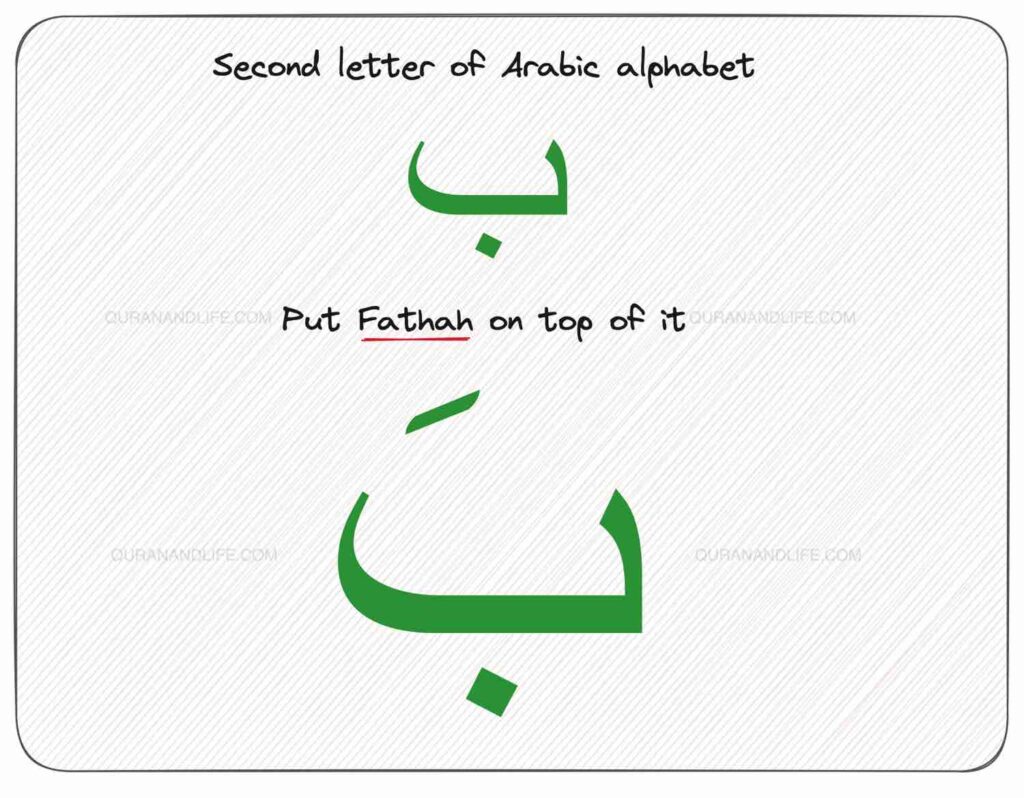
Take a look at a few more letters:
| Equivalent sound in English | Arabic letters with Fathah |
| “La” as in Lala | لَ |
| “Ha” as in Half | حَ |
| “Pa” as in Pasta | پَ |
Dammah
It is a small curl-shaped sign we place over a letter.
When you put the symbol on top of a letter, it makes an “oo” sound.
For instance when you add Dammah to (ب), it creates a sound “Boo” which is similar to the “oo” sound in the word Boom.
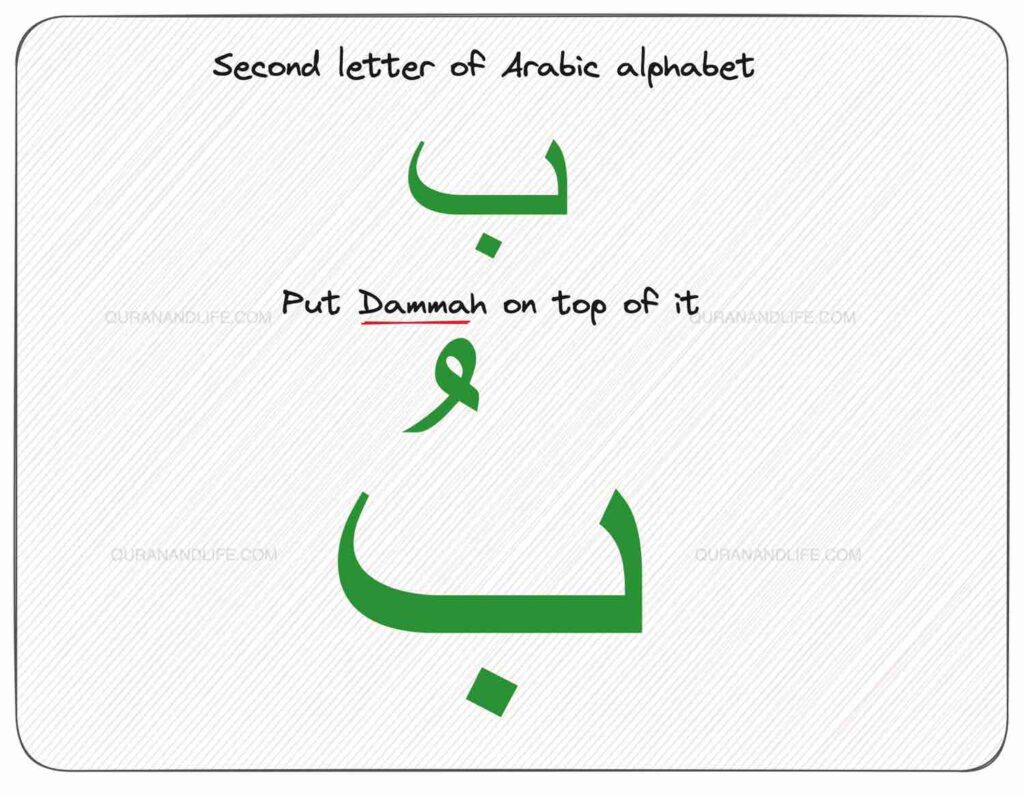
Here are a few more Arabic letters with Dammah on them:
| Equivalent sound in English | Arabic letters with Dammah |
| Zoo | زُ |
| Foo | فُ |
Kasrah
Similarly to the Fathah, it is a small line that we put under a letter. It creates the sound of “e” as in the word “be”.
The image shows how we put Kasrah under the letter.
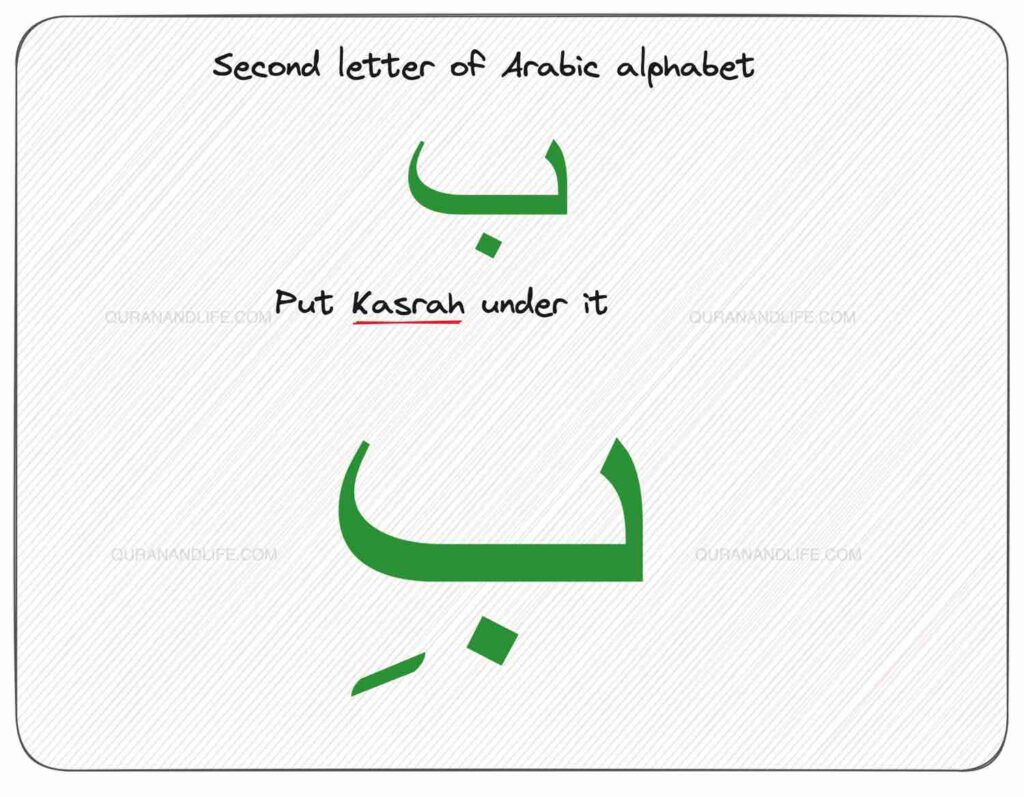
Here are a few more words that ends with an “e” sound:
- She
- He
- Flee
- Agree
| Equivalent sound in English | Arabic letters with Kasrah |
| Be | بِ |
| Je | جِ |
Note:
Harakat, Al-Harakat or Tashkeel are different terms we use to refer to Harakat.
When Harakat is applied to a letter, it becomes Mutaharrik which means it has movement associated with it.
Take a few more words from the English language and see how they create a sound equivalent to Arabic letters when we apply Harakat to them.
| Salmon | سَ |
| Seen | سِ |
| Suzan | سُ |
Note:
When you apply Harkat to the letters in the words, their meanings may change accordingly.
For instance, in English, when the vowel “e” is added to the words “plan” and “mad”, it changes them to “plane” and “made” respectively.
What is Tanween in Arabic?
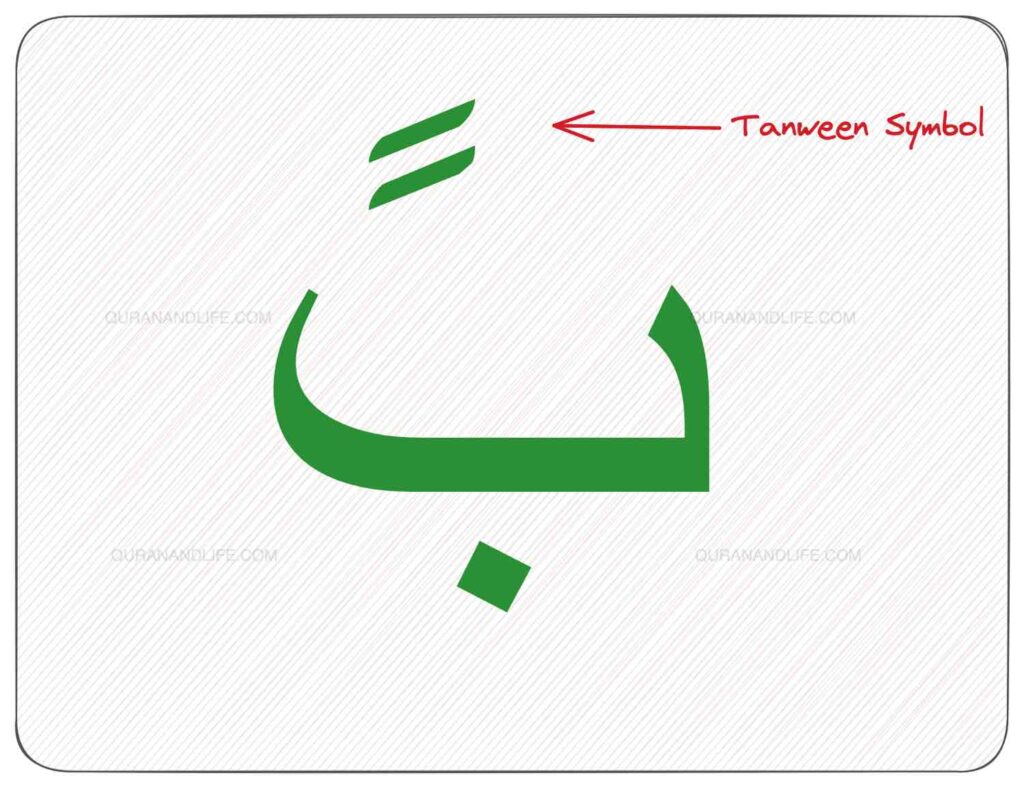
How do you create sounds like “sun”, “run”, or “win” while reading the Quran?
You can do that with Tanween rules.
Tanween in Arabic is an extension of Harkat and is commonly used in Quranic Arabic.
With the help of the Tanween symbol, a letter produces a “noon” sound.
Similar to how we put Harakat on the top and bottom of the letter, we apply Tanween to the letters.
Typically, the Tanween symbol is the double of the Harakat symbol.
In other words, it looks like there is a Harakat on the letter twice.
See, for example, the presence of Tanween in Aya 5 of the 113th Sura of the Quran.
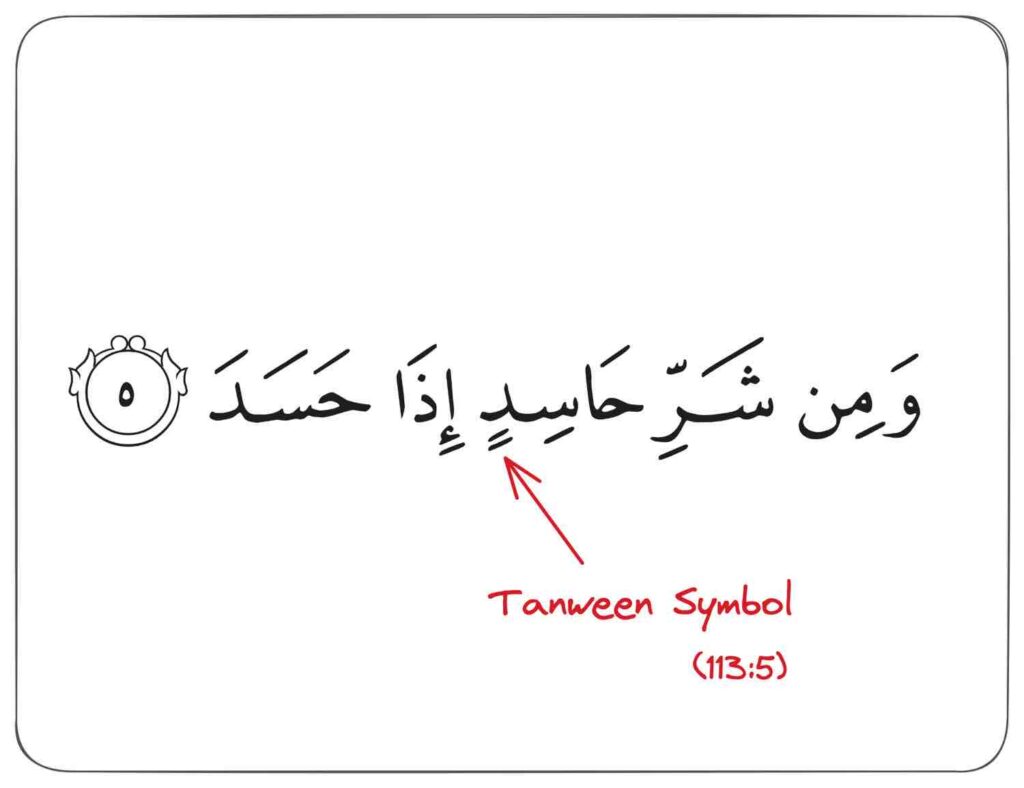
The table shows letters with Harakat and corresponding Tanween letters.
| Tanween | Harakat |
| بً | بَ |
| بٌ | بُ |
| بٍ | بِ |
To understand what sound a letter produces when we apply Tanween rules to it, take a few words from English.
These English words produce sounds similar to those of the corresponding Arabic letters in the right column.
| English Word | Tanween Letter |
| Sun | سً |
| Run | رً |
| Boon | بٌ |
| Soon | سٌ |
| Win | وٍ |
| Kin | كٍ |
What is Madd in Arabic (Huroof ul Madd)?
Previously, we added sound and movement to letters by using Fathah, Kasarah and Dammah.
The length of this sound is equal to one stretch: a Harakat measurement unit.
It is similar to measuring units such as grams, millimeters and inches.
So to understand, consider 1gm, 1mm or 1 inch as one stretch.
What if we need to extend beyond a single stretch? We’ll combine Harakat together.
For instance, 1 Harakat + 1 Harakat = Madd (natural madd)
This table explains the different forms of Madd.
| 1 Harakat x 1 | Not a Madd |
| 1 Harakat x 2 | Madd Tabeeiy (natural madd) |
| 1 Harakat x 4 | Madd Munttassil |
| 1 Harakat x 6 | Extra long Madd (rarely used) |
Note: We will cover extra long Madd in later sections.
Let’s jump to Madd Tabeeiy!
How to Apply Madd (Madd Tabeeiy)
A natural Madd is equal to the length of two Harakat. This is possible with the help of long vowels.
Remember the three long vowels in Arabic? [ا – و – ي – Alif, Wow and Ya].
When we add a long vowel to a letter with a Harakat on it, we stretch the sound more than usual.
That means, for Madd to work, we need to combine a short vowel with a long vowel.
For instance, if a Fatha is followed by an Alif (بَ + ا), we will stretch it twice (two Harakat).
It simply transforms a single Harakat into two.
Similarly, when Dammah is followed by a و and Kasra is followed by a ي, their sounds are stretched twice.
For instance, Ba + Fathah = Ba-Fathah (it’s a single stretch).
When we add an Alif (ا) to Ba-Fathah (بَ), we extend the letter sound twice. It now becomes Baa (بَا).
| Double stretch (Madd) | Single stretch |
| بَ + ا = بَا | ب + َ = بَ |
Now that you understand Madd, it’s time to move on and see another way Madd appears in Arabic letters.
Madd Ele’yeen
Madd Ele’yeen is a form of Madd. Unlike the natural Madd, this one removes its natural characteristics which makes it a weaker form of Madd.
Madd Munttassil – longer Madd
There are times when we want to stretch a letter longer than two Harakat.
We can do this by adding Hamza (ء) after the regular Madd.
This way you can stretch a letter four times – four Harakat.
The table shows how single, double and four stretches look.
| Four Time Stretch | Double Stretch | Single Stretch |
| جَاء | جَا | جَ |
| جِىء | جِى | جِ |
| جُوء | جُو | جُ |
These extra Madds are called Madd Muttasil and Madd Munfasil.
Typically, both Madds represent four Harakats, so they are identical.
Choose Next Lesson
Quran Course
Choose a lesson of your choice



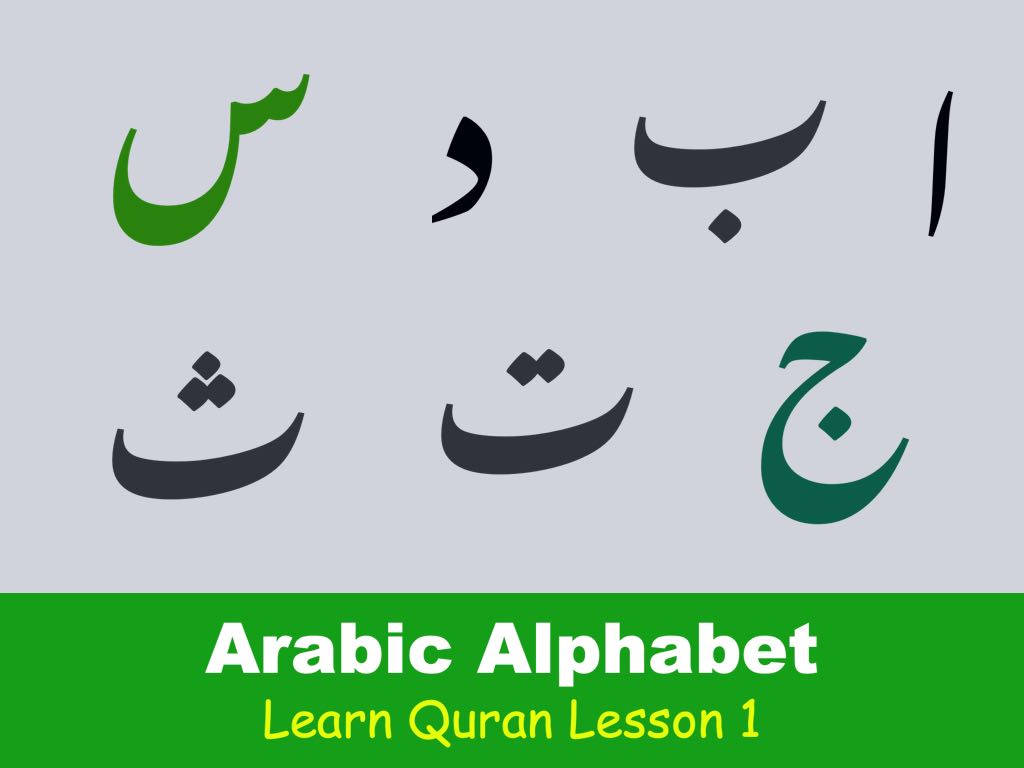

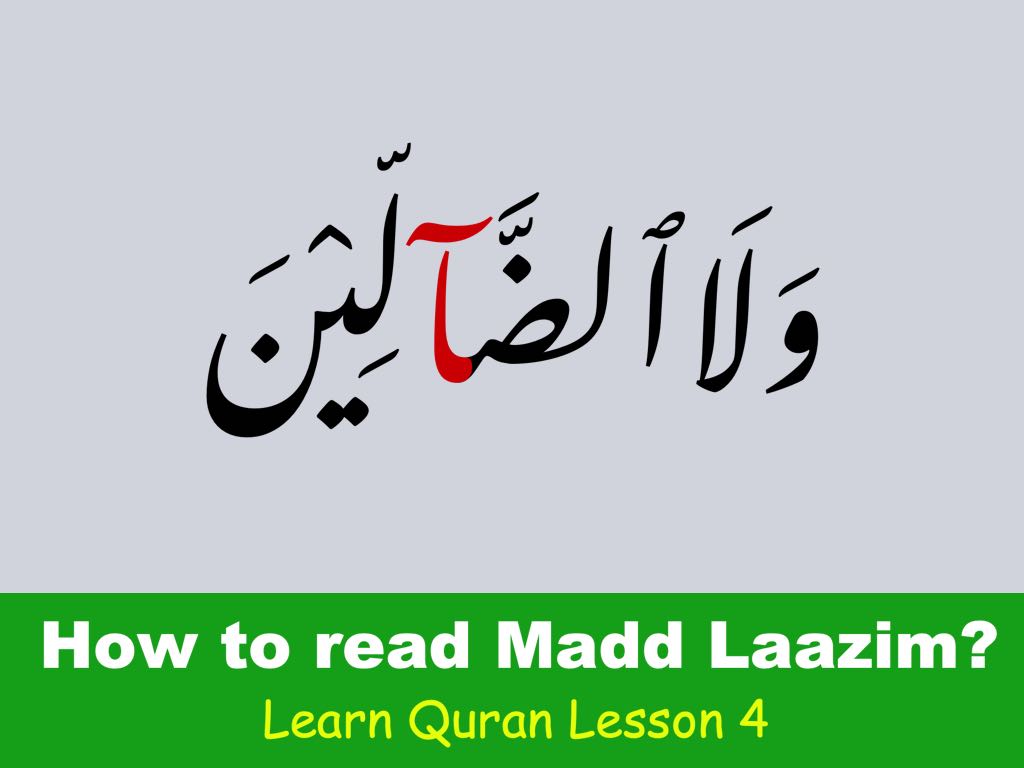
Maa Shaa Allah
السلام عليكم
الله همبارك.
Ma Sha Allah.
Alhamdulillah!